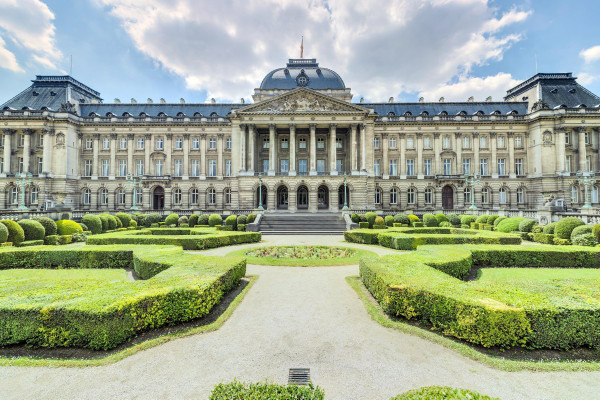
Tracks to Modernity
Royal Museums of Fine Arts of Belgium, Bruxelles
15 ottobre 2021 - 13 febbraio 2022
A cura di Dirk Vermaelen
An artistic and historical journey on the theme of the train through works by major artists of the 19th and 20th centuries such as Monet, Caillebotte, Spilliaert, Boccioni, Severini, Léger, De Chirico, Mondrian, Servranckx, Caviglioni, Delvaux and Magritte.
In its early days, the train was the ultimate symbol of modernity. It was a major tool of the industrial revolution. It carried the wildest dreams of development and prosperity but also crystalised anxieties and the rejection of change. In the 1820s, the first railway lines appeared in Great Britain to meet the needs of the mining industry. Belgium was the first to follow and in 1835, King Leopold I inaugurated a railway line linking Brussels with Mechelen.
The train profoundly changed society. It disrupted our relationship with time and space. Its tendrils reached everywhere: into cities where stations, iron bridges and railway tracks increasingly took over the urban fabric; but also in the countryside, where the train intruded, tearing the landscape apart. It became a tool of the nascent tourism industry, promoted with posters and available in three classes, which artists such as Daumier enjoyed observing.
At the end of the 19th century, the Impressionists took up modern subjects, including the railways. Clouds of steam, the movement of trains, the changing light of the station and its surroundings are all aspects Monet, Caillebotte, De Nittis and Ottmann tried to capture. At the same time, the Lumière brothers made L’arrivée d’un train en gare de la Ciotat. Cinema and photography also took pride of place in the railway universe.
Modern society – its speed, violence and the sensations it generated – also fascinated Futurists such as Severini, Carrà, Russolo, Baldessari and Sant’Elia. Boccioni was one of the first to take an interest in the psychological aspects of travel.
The Surrealists adopted the point of view of the traveller: psychological aspects took precedence over the appeal of modernity. Freud’s research on the train and its effect on passengers nourished their work. Max Ernst was interested in the microcosm of the train compartment, Blaise Cendrars associated travel with introspection. De Chirico, Delvaux and Magritte generated images of alternative realities, inhabited by motionless movements, timeless trains in a strange and even disturbing world.
Artists’ interest in the train diminished from the 1950s onwards, but it’s making a comeback in an era when modernity and the environment must be reconciled. The artist Fiona Tan will present an installation on this theme.
An invention as fascinating as it is frightening
The first railway lines appeared in Britain in the 1820s. On the continent, Belgium was the first country to follow suit and, in 1835, Leopold I —keen to put his newly-independent country on the international map—opened a public railway line between Brussels and Malines. Trains were at that time the ultimate symbol of modernity, and a major tool of the industrial revolution and of the transformation of western societies.
They were celebrated and embodied the wildest hopes of development and enrichment, but also crystallized fears and rejection of change. Railways revolutionized the relationship with time and space.
Distant destinations were brought closer and travelling made possible and permitted where previously it had been an adventure which only a few dared to and were able to undertake. Local, solar time, indicated by the ringing of church bells and differing by a few minutes from town to town, gradually disappeared, incompatible with the accelerating pace of life and with travellers’ safety and comfort.
The intrusion of the train
The train quickly changed society profoundly. It wove its web within cities, where stations, metal bridges and railways increasingly encroached on the urban fabric, but also in the countryside, where it imposed its presence, tearing up the scenery with its cuttings and its fleeting appearances. The train collided with traditional society. As Émile Verhaeren wrote, “You were the same people living in a place, / You knew nothing but your same old ways, / And now the whole world rolls over you, / With its tumult and its waves” (L’Or). At the end of the 19th century, the Impressionists seized on modern subjects, and trains occupied a significant place in their works. Clouds of steam, speed, movement and the changing light of stations were all aspects which painters strove to reproduce. In Italy, Giuseppe de Nittis injected speed and movement into his paintings without even showing the train in them. Shortly afterwards, in Brussels, Henri Ottmann depicted the Luxembourg Station, its tangles of tracks and the smoke from its trains.
Film & Photography
The world of the train is eminently cinematographic and it was given a prominent place from the earliest days of filmmaking. Prime examples are the Lumière brothers’ 1897 film L’Arrivée d’un train en gare de La Ciotat (Arrival of a Train in La Ciotat) and La Roue (The Wheel), directed by Abel Gance in 1923, in which the world of railways plays the leading role. The train often marks a moment of transition in the story, between two cities and between two realities. Could it not be said, however, that the first cinematographic experience was felt by 19th century travellers even before the invention of cinema? On trains, they experienced the “moving gaze”: their eyes had to train themselves to interpret images subjected to speed and continuous movement. The train creates a new mode of perception. Like the Impressionists and others after them, photographers played on trains and the graphic qualities of steam, signals or stations. We see in their photographs the link to industry, the expression of almighty mechanical power and the poetry of railway landscapes.
Modernity, speed and sensations
“We declare that the splendour of the world has been enriched by a new beauty: the beauty of speed. […] Time and Space died yesterday”, asserted Filippo Tommaso Marinetti in 1909 in his Futurist Manifesto. It was modern society—its speed, its violence and the sensations it generates— which interested the futurists. Although the train as already no longer the most technologically advanced means of transport, it occupied a crucial symbolic place in the works of those who wished to “[sing of] the multi-coloured and polyphonic surf of revolutions in modern capitals; […] gluttonous railway stations devouring smoking serpents; factories suspended from the clouds by the thread of their smoke; […] great-breasted locomotives puffing on rails like enormous steel horses with long tubes for bridle, and the gliding flight of aeroplanes.
For better or for worse
A symbol of freedom, trains can also embody war, oppression and exploitation. At the end of the 19th century, westerners—under the guise of a civilizing mission—developed railways designed to exploit the resources of their colonies more effectively. “Without railways, the Congo is not worth a penny”, said Stanley, who colonized the country for Leopold II. And in the Congo, the undertaking was colossal. The terrain was particularly rugged, workers were subjected to extreme working conditions and the human losses were considerable. The financial interests and imbalances generated by railways were also at the centre of the demands of French railway workers, who undertook a large-scale strike in 1910. In the drawings of Jules Grandjouan, a militant poster designer, railway workers are pitted against directors, those who take risks against those who possess. The First World War, which the Futurists exploited pictorially, undoubtedly marked a broader realization of the power of railways and of the sometimes nefarious purposes for which they can be used. Mass deportations to concentration camps during the Second World War are the best-known and most tragic example of this.
Luxury tourism and mass tourism
Tourism was born in the 18th century. At the time it was restricted to an elite: young men of the aristocracy and the upper middle classes—in England in particular—were expected to complete their education with a journey around Europe. This journey, called “The Grand Tour”, gave rise in 1800 to the term tourist. It was only with the development of railways that genuine leisure tourism began. This too was at first restricted to an elite, those who had both time and resources and who could therefore enjoy the palaces, seaside resorts and spas of the late 19th century. The less affluent sometimes got away to the coast on a Sunday in packed “pleasure trains”. It was not until the 1930s and the advent of paid leave that tourism—initially domestic— took on a new look. For the first time, people’s free time exceeded the simple time required for workers to rest and they had time available for leisure. Thanks to reduced prices for holidaymakers, thousands of families were able to go away on vacation and tourism expanded considerably.
Aesthetics of the machine
In the diagram he published in 1936 at the time of the Cubism and Abstract Art exhibition presented at the Museum of Modern Art in New York, Alfred Barr, the famous founder and first director of the museum, identified "machine esthetic" as one of the key influences which had led to abstract art, along with external influences such as African sculpture or Japanese prints. Even if Barr’s diagram should be viewed with reservations because it tends to present abstract art as a high point, it is nevertheless indicative of the importance of the pictorial vocabulary as a result of the new interest in machines. This interest developed from the mid1910s onwards. Up to then, machines had not been a favourite subject for the avant-garde, which had different aspirations: the themes of the countryside, rural life and the quest for the primitive grew in importance even while industrialization was increasing. From the 1910s onwards, however, machines became part of everyday life: cars, bicycles, sewing machines, typewriters and electricity invaded streets and homes. Certain artists now used technology as a means of developing their art, as an ally which some ended up admiring and integrating in their works.
The compartment
In literature and in the visual arts, the train compartment holds a special place. Simultaneously public and semi-private, it is often associated with sexuality, as in the film The Kiss in the Tunnel (George Albert Smith, 1899), in which the train becomes a sexual symbol, penetrating the tunnel and thereby offering a moment of darkness conducive to kissing. Alfred Hitchcock was to use the same process sixty years later in North by Northwest, a film in which the Freudian symbolism of the train reaches its climax when Cary Grant and Eva Marie Saint lie down on the bunk as the train enters the tunnel. Train compartments are also often associated with crime scenes and danger, as in the work of Max Ernst, who created strange and decadent compartments in which fear, threat and violence are expressed. The compartment can also offer privacy and a solitude sometimes conducive to introspection and reflection.
Strangeness and introspection
With the surrealists, the link between movement and feelings took on its full importance. They explored the passenger’s point of view: the psychological aspects took precedence over the attraction of modernity and technology, to which they barely paid any attention, the First World War having perhaps dimmed any enthusiasm. Their work was fuelled by the research of Sigmund Freud, who took an interest in trains and their effects on passengers. The train and its compartments form a veritable microcosm which becomes a tool for exploration of the subconscious and critique of bourgeois society. Blaise Cendrars, in his poem Prose of the Transsiberian and of Little Jehanne of France, sees the journey as an introspective process in the course of which thought escapes and evolves. Giorgio de Chirico and Paul Delvaux, for their part, offer us images of alternative realities populated by immobile movements and timeless trains inhabiting a strange or even disturbing world.
And afterwards?
Was it the recent hegemony of cars or the growth of air transport? In any event, the train lost some of its lustre in the second half of the 20th century and artists gradually turned away from this theme. However, the modernity of these machines is taking centre stage again today, due in particular to ecological concerns. Paradoxically, the train, which was previously synonymous with the rapid acceleration of society, is now seen as a means of deceleration allowing people to return to a less hectic way of travelling and living.
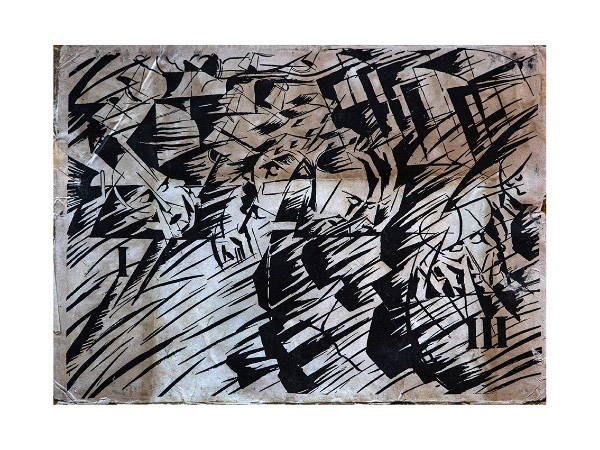
UMBERTO BOCCIONI - Quelli che vanno, 1911
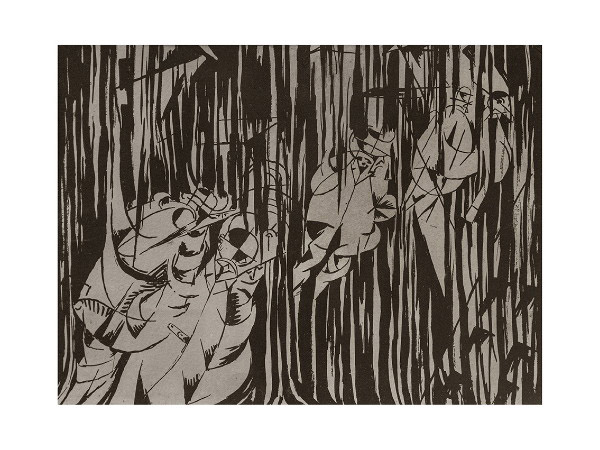
UMBERTO BOCCIONI - Quelli che restano, 1911
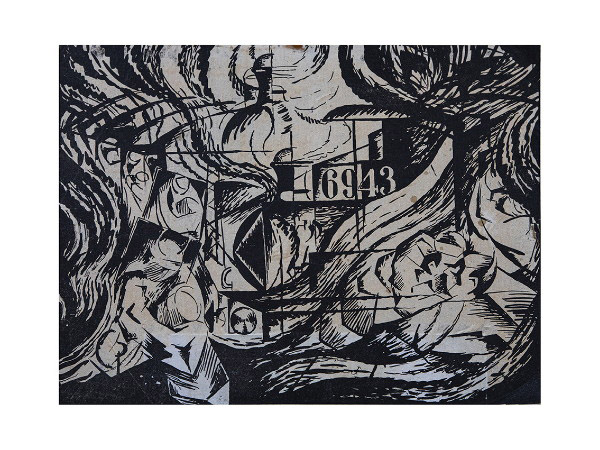
UMBERTO BOCCIONI - Gli addii, 1911
FASCINATING AND FRIGHTENING INVENTION
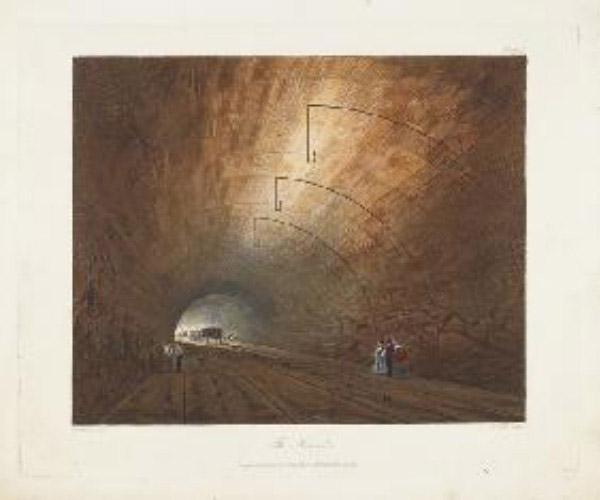
THOMAS TALBOT BURY - The tunnel, 1831
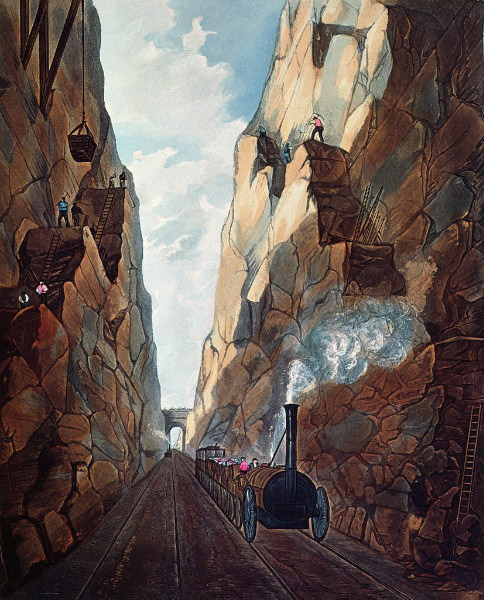
THOMAS TALBOT BURY - Excavation of Olive Mount, 1831
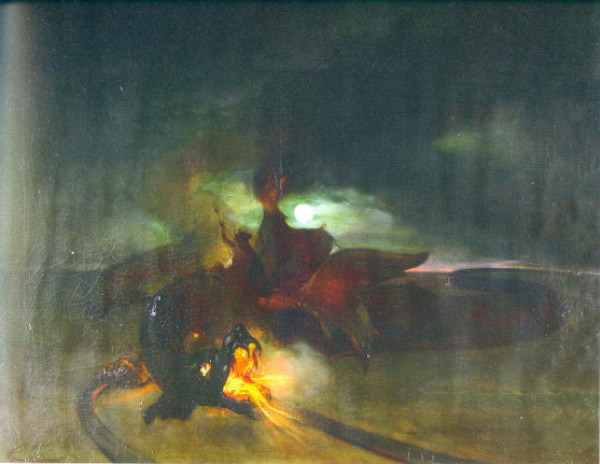
GUSTAAF WAPPERS - Satan's Charlot, 1837
THE INTRUSION OF RAILWAYS

LIONEL WALDEN - Cardiff Docks, 1894
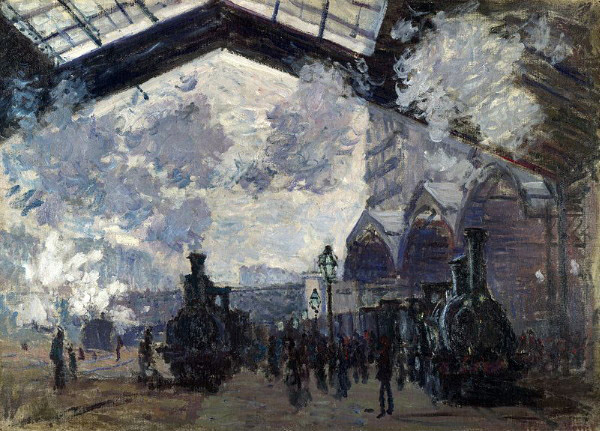
CLAUDE MONET - La gare Saint-lazare, 1877

GUSTAVE CAILLEBOTTE - Argenteud bridge, 1885
FILM & PHOTOGRAPHY
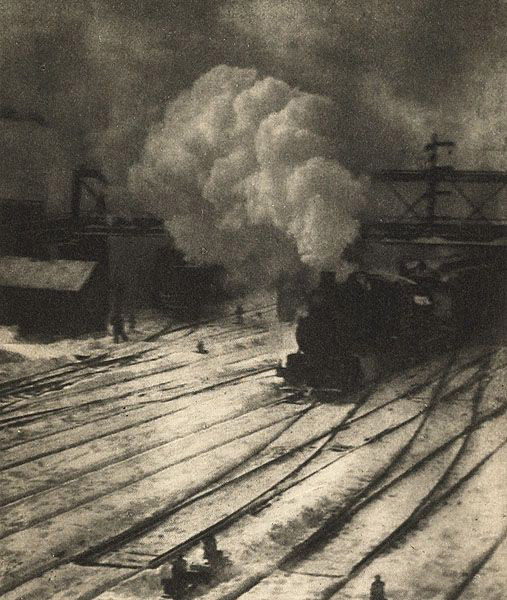
ALFRED STIEGLITZ - New York Central Yards, 1907
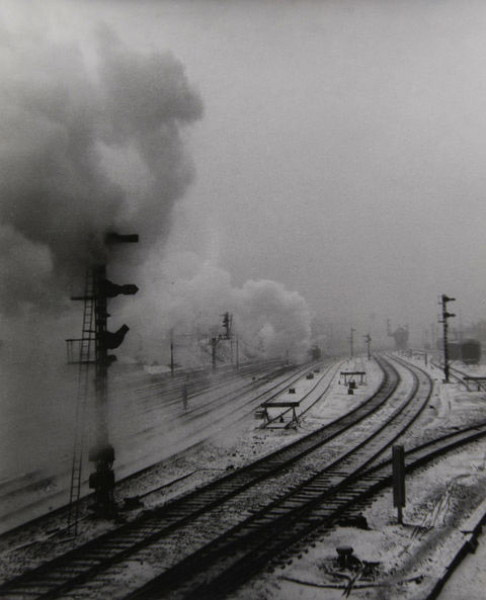
MAURICE BROECKAERT - Grisaille, 1957
MODERNITY, SPEED AND SENSATIONS
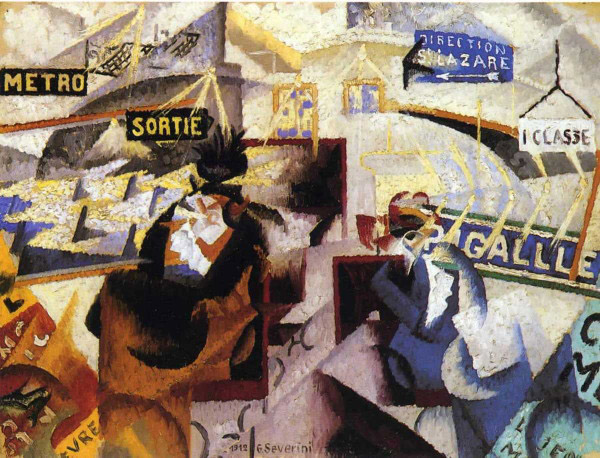
GINO SEVERINI - NORTH SOUTH, 1912

ROBERTO MARCELLO BALDESSARI - Treno + luci + velocità, 1916-1917

SASSU ALIGI - Evoluzione della macchina, 1929
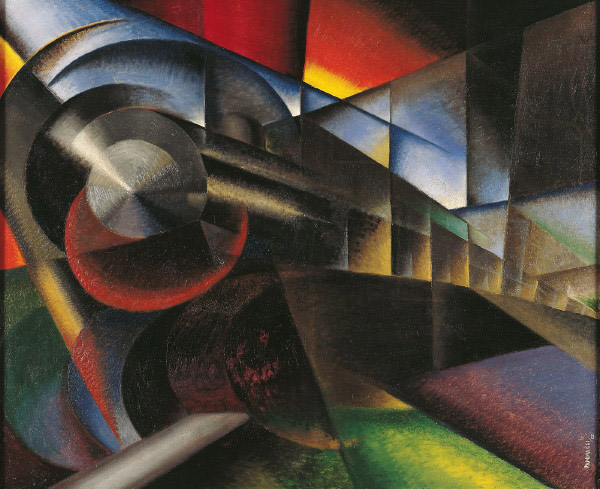
IVO PANNAGGI - Treno in corsa, 1922
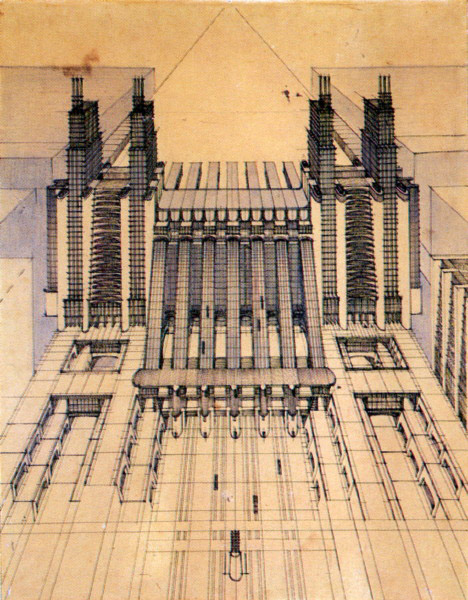
ANTONIO SANT’ELIA - Stazione d’aeroplani e treni con funicolari e ascensori su tre piani stradali, 1914
FOR BETTER OR WORSE

JULES GRANDJOUAN - National Union, 1910
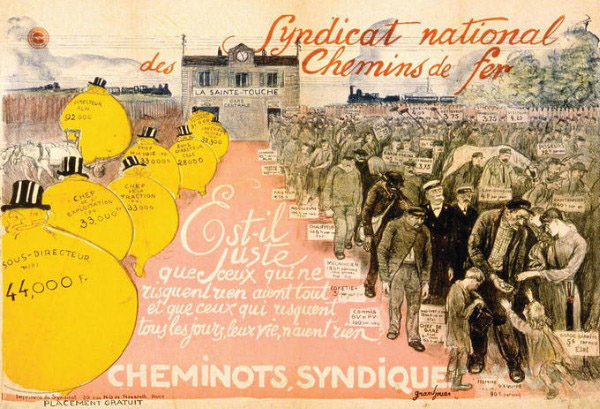
JULES GRANDJOUEN - National Union of Railway Workers, 1910
LUXORY TOURISM & MASS TOURISM
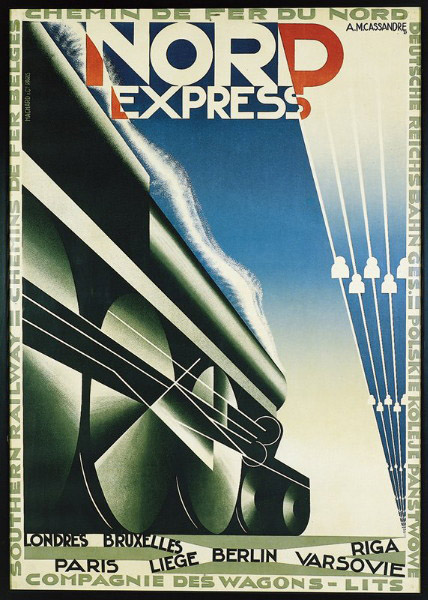
A.M. CASSANDRE - Nord Express France, Hachard e C., Paris, 1927
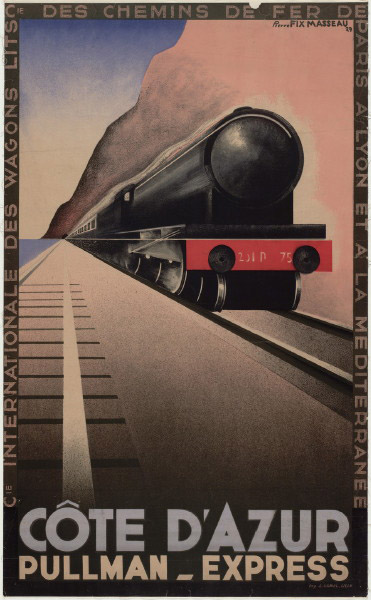
PIERRE FIX MASSEAU - French Riviera Pullman Express, 1929
THE AESTHETICS OF THE MACHINE
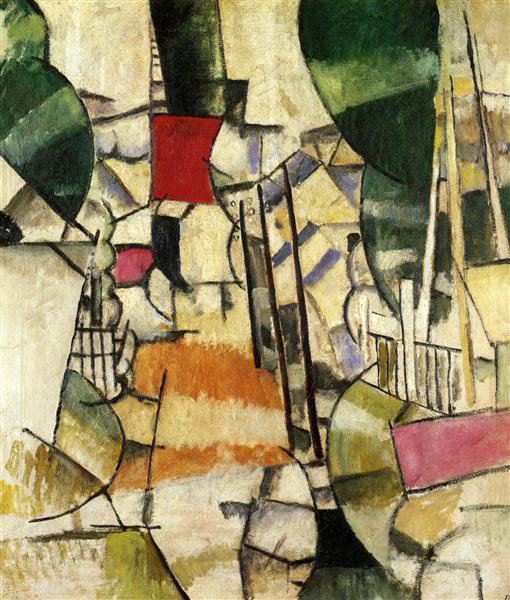
FERNAND LEGER - The Level crossing, 1912
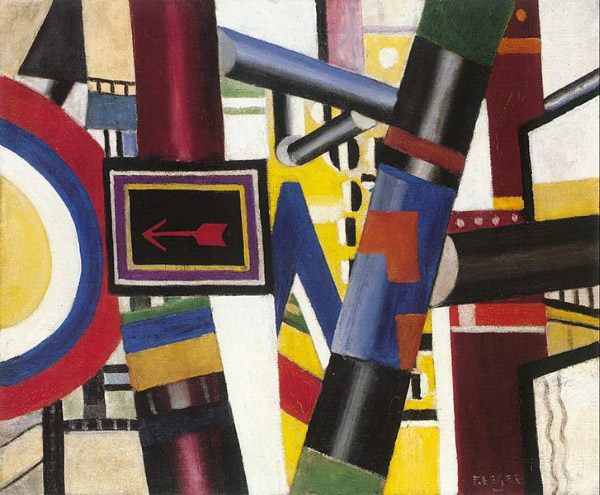
FERNAND LEGER - The Level crossing, 1919
STRANGENESS & INTROSPECTION
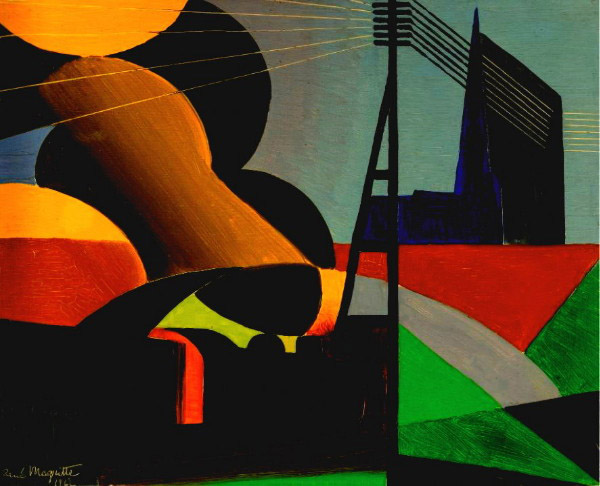
RENÈ MAGRITTE - The Locomotive, 1922
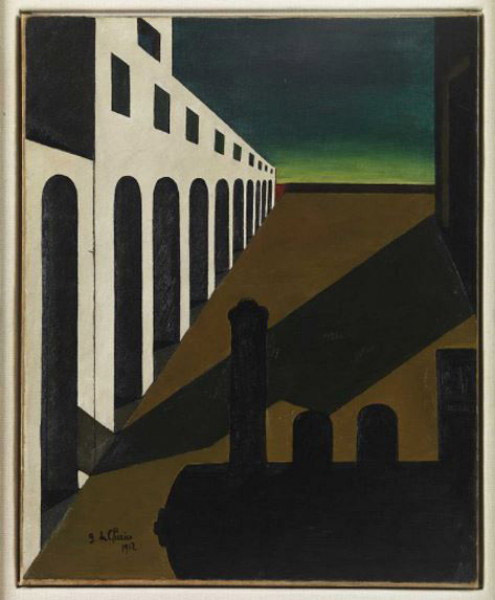
DE CHIRICO - La Matinèe angoissante, 1912
THE RAILWAY COMPARTMENT
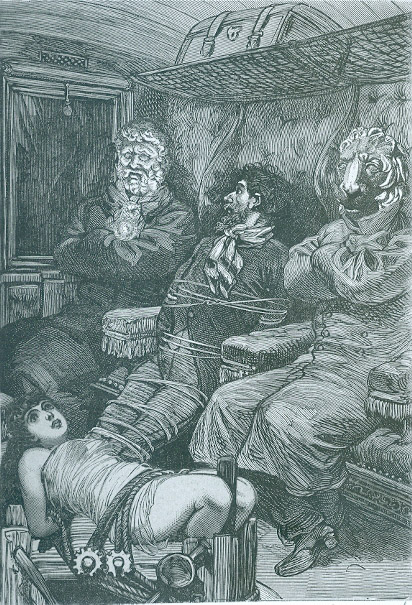
MAX ERNST - Opere, una settimana di bontà, 1924
Info Mostra
Tracks to Modernity
Royal Museums of Fine Arts of Belgium
Bruxelles

